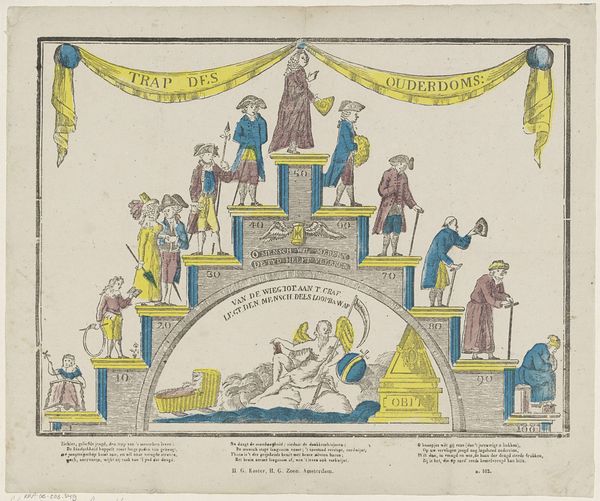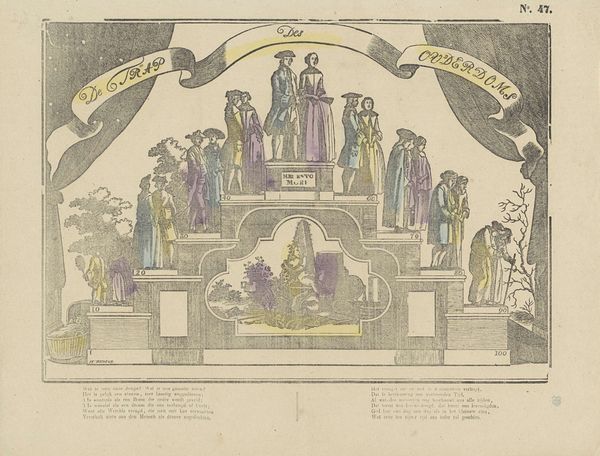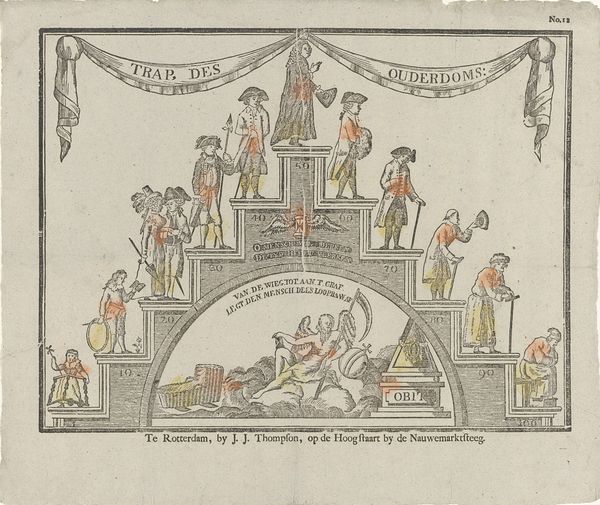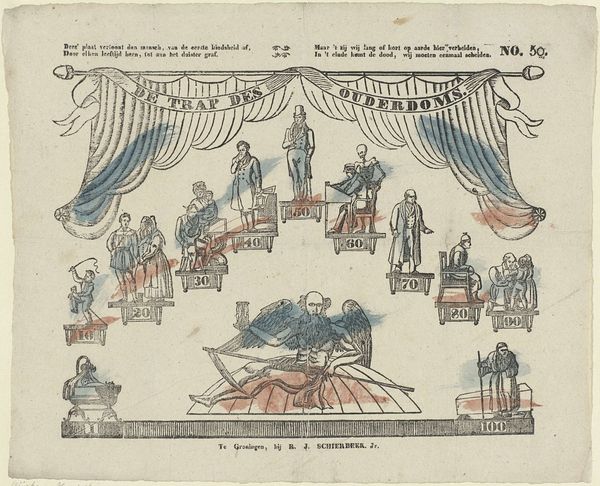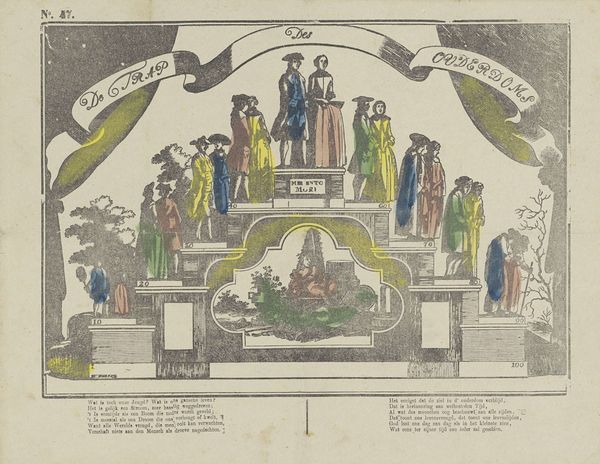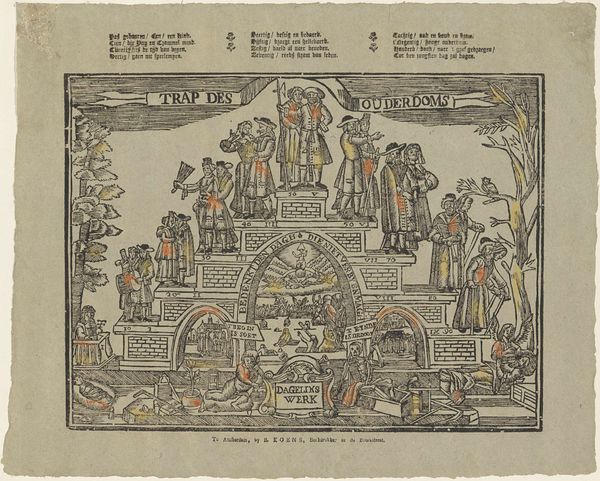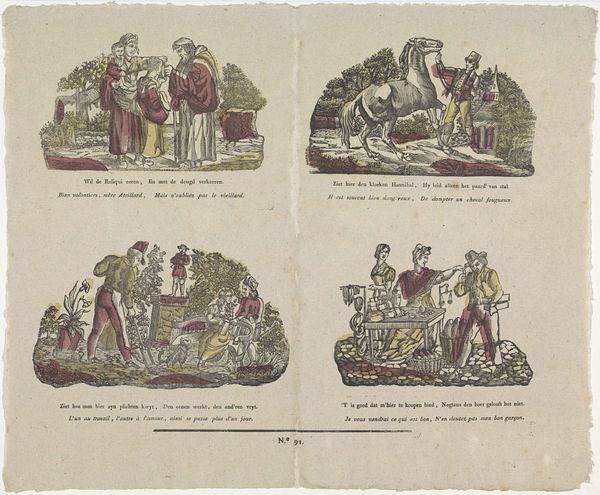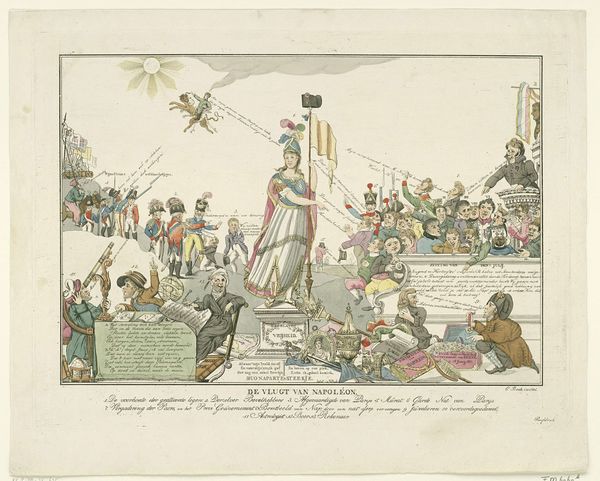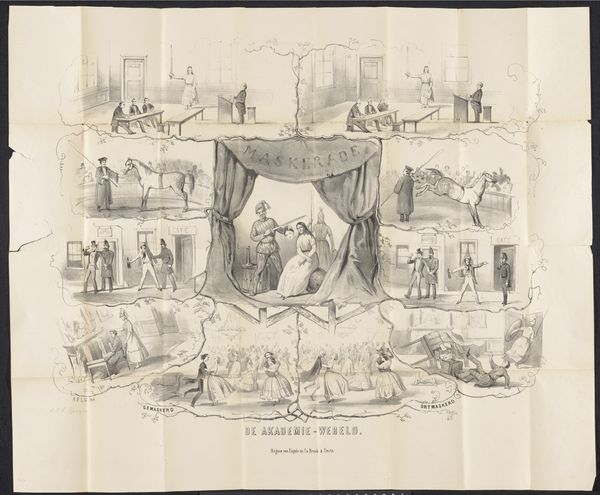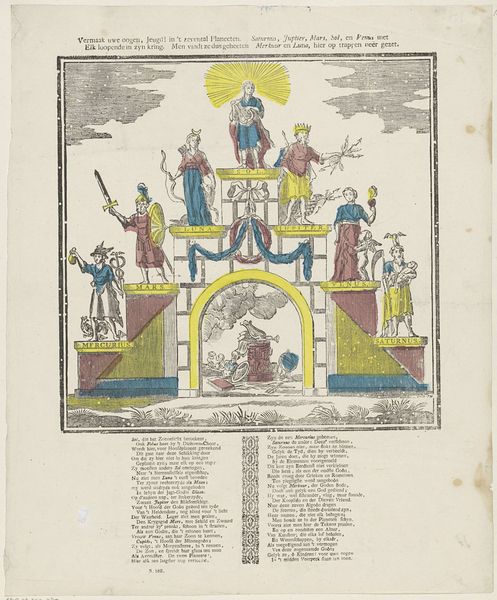
Dimensions: height 324 mm, width 395 mm
Copyright: Rijks Museum: Open Domain
Curator: This engraving, *Trap des Ouderdoms*, made sometime between 1856 and 1900 by Dirk van Lubeek, seems incredibly poignant to me, particularly as it is housed at the Rijksmuseum today. What jumps out at you initially? Editor: Well, visually, it is intriguing. It is constructed like a game board almost, a staircase showing different stages of life. It makes me think about social class or the different steps in society. What’s your read? Curator: I think that reading is definitely on point. The 'game board', as you put it, reveals a lot about the societal production of aging. Think about the material conditions represented here: the clothing, the walking sticks, even the little platforms that demarcate each decade. These aren’t simply aesthetic choices. Editor: How so? Curator: Each detail signifies access, or lack thereof, to certain material goods and social roles. The "trap" itself speaks to the deterministic nature of aging within a structured society, no one can jump the "stairs." Van Lubeek’s method itself, etching, and engraving speaks to a means of mass production, reminding us of labor and consumption. It wasn't just art but a commentary on the lives art serves to mirror. Does it shift how you interpret the work? Editor: Definitely. It makes me think about the historical context, how life expectancy and social mobility factored into viewing life stages. So, rather than inevitable stages, it represents culturally and materially influenced states of being. Curator: Exactly! Seeing art in this light gives us a more substantial appreciation of the social narrative it illustrates. Editor: This reframing makes this artwork much more vibrant, moving it beyond simply a piece of decorative art.
Comments
No comments
Be the first to comment and join the conversation on the ultimate creative platform.
